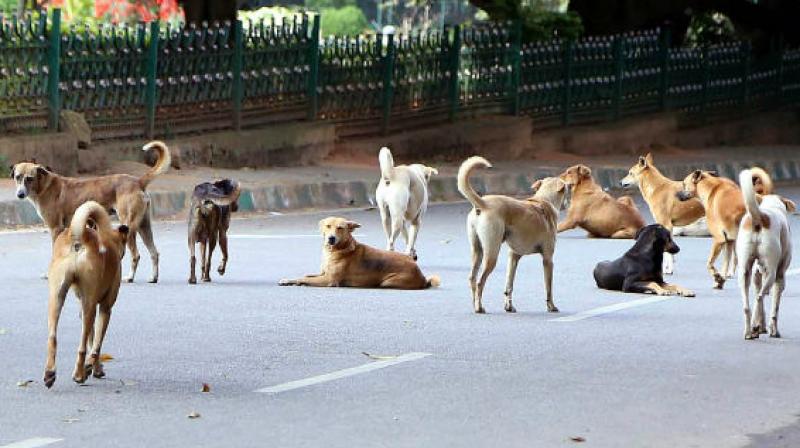Once upon a time, stray dogs were killed as part of efforts to control their population. Later, killing or maiming of stray dogs was declared an offence as per the Prevention of Cruelty to Animals Act, 1960. In fact, killing, maiming, poisoning, or rendering useless any animal is punishable by imprisonment for up to two years or with a fine or with both, under Section 428 of the Indian Penal Code, 1860. In 2001, the central government passed the Animal Birth Control (dogs) rules with an aim to reduce the population of stray dogs by sterilization. The process of sterilization is not as simple as it sounds. It has to be done with the support of animal welfare organisations, local authorities and it involves certain rules as well. The stray dogs can be sterilized only after having attained the age of at least four months and it has to be done scientifically while keeping in mind the rights of animals. However, these proposals regarding sterilization of dogs were not implemented properly – neither in Jammu and Kashmir nor several other parts of the country. As a result, the growing stray dog population continues to pose a threat to the people. Experts have cited lack of coordination between various authorities, budgetary constraints and above all political will as bottlenecks.
Now, the centre recently proposed draft Animal Birth Control Rules, 2022 to remove the bottlenecks so that the issue of stray dogs was tackled. The new rules have proposed establishment of sufficient number of kennels and veterinary hospital facilities at the local level as well as the requisite number of vans with necessary modifications for safe handling and transportation of dogs and mobile operation theatres for sterilisation of animals. At the same time, local bodies will be required to set up incinerators for the disposal of organs and carcasses. The CCTVs too are to be installed on the entire premises specifically in the operation theatre and the shelters where the animals are housed. The record of video surveillance is to be maintained for a minimum of three months, according to the draft rules. Even if a dog bites a human, the animal has to be treated humanely and to be kept under observation. In case a dog is found to have a high probability of rabies, it would be isolated till it dies a natural death. In the given circumstances and dos and don’ts, sterilization of dogs at a place like Kashmir valley can pose greater challenges to the authorities. Though the Srinagar Municipal Corporation (SMC) was supposed to step up sterilization of dogs, it has not yet done the same as per expectations. The officials in the past had set a target of carrying out around 240 sterilization surgeries per day but no visible change is being witnessed on ground. In fact, the number of stray dogs is increasing even as no recent census has been carried out. As per a census conducted in 2012-13, there were 49,000 stray dogs in Srinagar city. A recent plea by the petitioners in the court based on the details collected from different sources had revealed that nearly 90,000 stray dogs are roaming in Srinagar city only. Though there was no official confirmation, as many as 45,808 dog bite cases were reported from April 2015 to September 2022 at the SMHS Hospital only. At times, the stray dogs have been a cause of embarrassment for the authorities as at least 39 persons including 17 tourists were injured after they were attacked by these animals in the Buchwara area near Boulevard road earlier this year in April. This particular news had gone viral on social media. The growing population of stray dogs is posing a serious threat in other districts of the Kashmir valley as well. Therefore, the authorities have to come up with a sterilisation plan, not just for Srinagar, but all other districts of the Valley.
Unfortunately, residents may have to wait for a long time still for a concrete policy in this regard, and in the meantime, they too have to act responsibly. It is common to see people feeding stray dogs and some do it religiously in Kashmir as they feel it wards off evil. People feed these dogs outside their homes or in the lanes of their mohallas. By doing so, people are directly inviting dogs to their mohallas and then they ironically complain about the increasing population of these stray animals. Once a stray dog receives food at a particular place, it then stays there permanently. Now, people will argue that it is their right to feed the stray animals but then this act too has to be done as per the laws. The Supreme Court had recently suggested people, who routinely feed stray dogs, to take responsibility for their vaccination and be also ‘liable to bear the costs’ if those animals attack people. In another case, the Delhi High Court has emphasized that such feeding has to be done at the designated spots, which are to be carefully chosen by the animal welfare board (AWB) in consultation with resident welfare associations and municipal corporations taking due care that such spots are less frequented by residents. Unfortunately, feeding of stray dogs happens inside mohallas of the Valley and then the same people complain over its increasing population.
As far as the new draft rules are concerned, the centre has included detailed guidelines for monitoring dog welfare programmes at various levels. The draft rules also aim to reduce human-animal conflict by specifying how dogs are to be fed and how disputes regarding dog bites should be resolved. The concerned authorities in Jammu and Kashmir should undertake a thorough study of the draft Animal Birth Control Rules, 2022 and come up with an elaborate sterilization programme in all districts of the union territory.
Discover more from The Kashmir Monitor
Subscribe to get the latest posts to your email.




